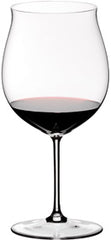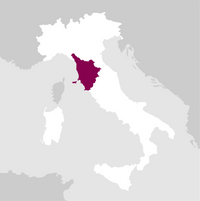Description
The Chianti Classico Castello di Ama San Lorenzo wine comes from the splendid valley overlooked by the 18th-century villas. It is made from grapes from old plantings and from those that, having been planted at least ten years ago, demonstrate at harvest that they have reached a perfect level of polyphenolic ripeness.
Awards
Details

Perfume

Color

Taste
Serve at:
18 - 20 °C.
Longevity:
10 - 15 years
Decanting time:
1 hour

Pairings
- Start up year: 1976
- Oenologist: Marco Pallanti
- Bottles produced: 320.000
- Hectares: 75
To date, Castello di Ama owns and manages about 75 hectares of vineyards and 40 hectares of olive groves, relying on the work of more than 60 people. The role of general manager and oenologist is held continuously by Marco Pallanti, who served, between 2006 and 2012, as President of the Chianti Classico Consortium, bringing the contribution of the creation of the 'Gran Selezione' category with the aim of highlighting the extraordinary quality and diversity of the region's wines. Read more


| Name | Castello di Ama Chianti Classico Gran Selezione San Lorenzo 2011 |
|---|---|
| Type | Red still |
| Denomination | Chianti Classico DOCG |
| Vintage | 2011 |
| Size | 0,75 l |
| Alcohol content | 13.0% by volume |
| Grape varieties | 80% Sangiovese, 10% Malvasia Nera, 10% Merlot |
| Country | Italy |
| Region | Tuscany |
| Vendor | Castello di Ama |
| Yield per hectare | Great selection is an important step in the name of the Chianti Classico and becomes the top of the pyramid of quality of Chianti Classico. The wines bearing this name are a guarantee for the consumer in terms of origin and quality. In fact, the production regulations imposed on them that the grapes are fully manufactured in the company and that the wine is put on the market after 30 months after the harvest |
| Harvest | Between September 28 and October 8, collected manually in small boxes of 12 kg capacity, about 1300 q.li grapes. |
| Fermentation temperature | After a ride on the table of choice, the grapes, crushed and de-stemmed, are passed to ferment, variety is in stainless steel tanks at a temperature of about 30-32 degrees. During fermentation, the must was refitted several times a day |
| Fermentation | Maceration lasted for about 21 to 23 days. After racking, malolactic fermentation was carried out. |
| Aging | After assembly, the wine was in barrels, 20% first-pass and the rest used, where they remained ageing for about 12 months. |
| Allergens | Contains sulphites |





